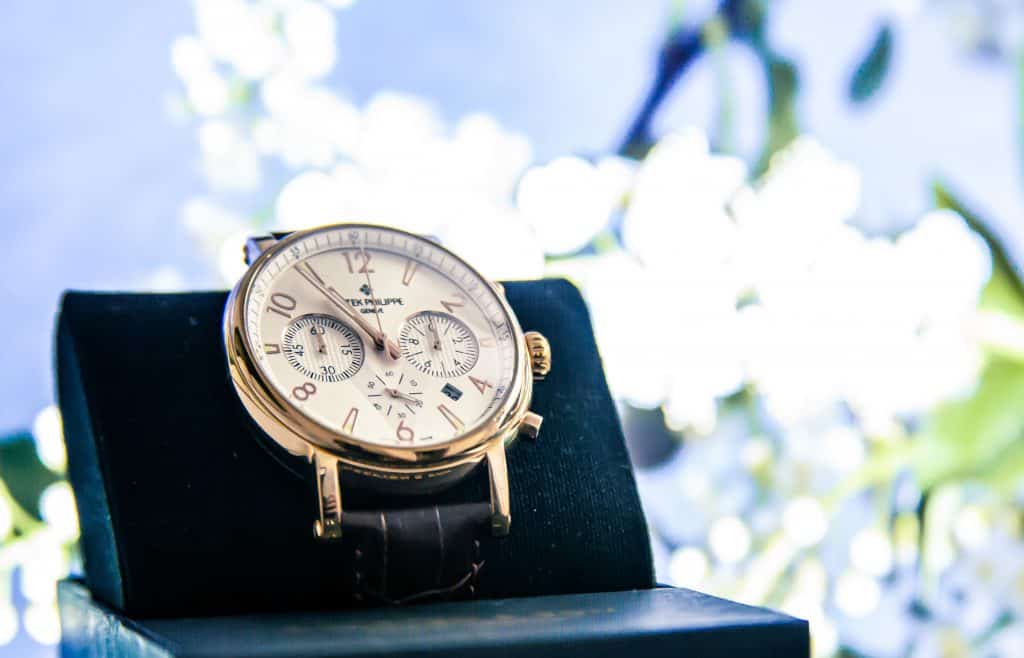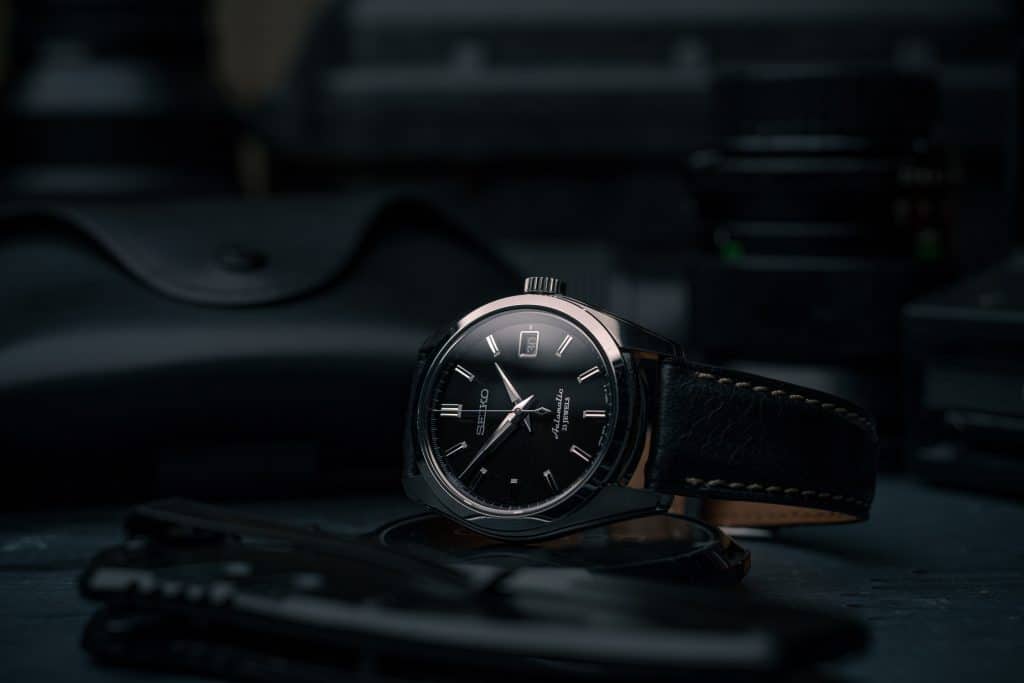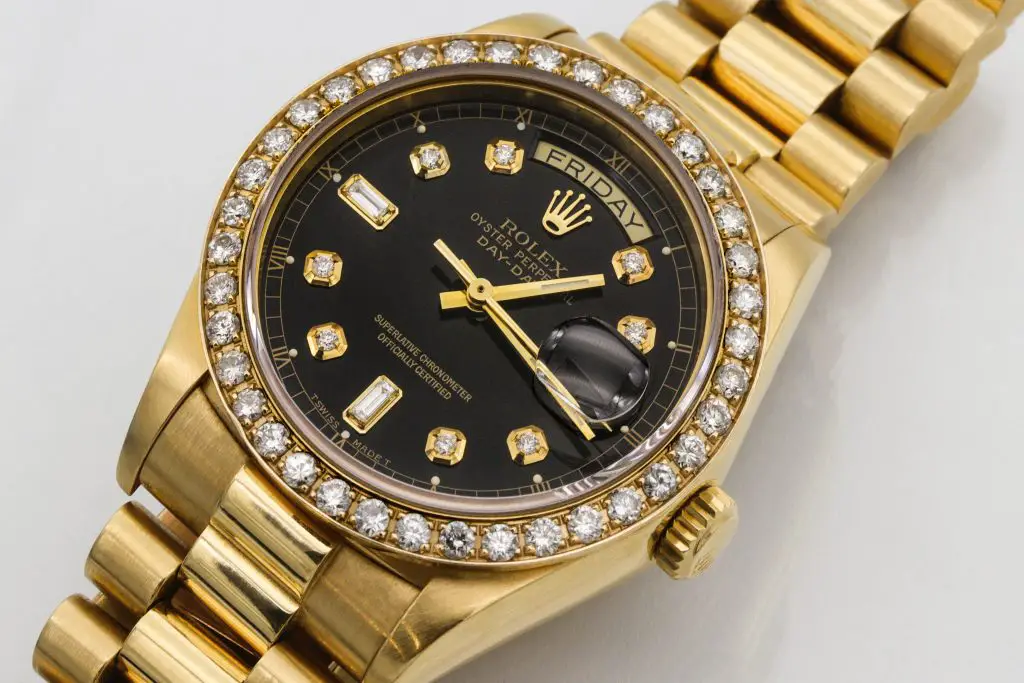When it comes to luxury watches, most people immediately think of Swiss watches. Japanese watches are often overlooked, even though a lot of them are on the same level. Some might even argue that they’re better than Swiss watches, but is that true?
Both Swiss and Japanese watches excel in their own regards. Japenese watchmakers tend to focus on functionality, while Swiss watchmakers tend to focus on the storytelling and luxuriousness of the watch.
This, of course, is not to say that Swiss watchmakers don’t focus on functionality, or that Japanese watchmakers don’t focus on luxuriousness. But, in some regards, Swiss or Japanese watches are just better than the other!

Table of Contents
Where To Compare Japanese Watches To Swiss Watches
When it comes to comparing Swiss watches to Japanese watches, it’s important to know what to look for. One of the most important parts of a watch is the movement, so this is definitely something to look at.
Aside from the movements, the price these watches are sold for is also important. And so are the looks and history.
In this article, we’ll take a look at all these aspects. Please keep in mind that both Swiss and Japanese watches are incredible in their own right and that there really is no right or wrong here, as both have their advantages and disadvantages.
The Movements Used
The movements used in a watch are arguably the most important aspects of a watch. The movement is often called the core or the heart of a watch, but there are some differences between Swiss and Japanese movements.
Both Swiss and Japanese watchmakers make incredibly good movements, but the Swiss tend to make more mechanical or automatic watches, while the Japanese tend to make more quartz watches.
Quartz Watches
Quartz watches are some of the most common watches and they make use of a quartz movement system, hence the name. To put it simply, a quartz movement makes use of a little battery that gives off an energy signal.
This signal makes sure the watch moves and functions properly. Quartz watches are known to be very accurate and also on the more affordable side. A perfect pair for any watch lover.
The very first quartz watch was released back in 1969 by Seiko, a Japanese watch brand. In fact, the whole quartz concept was invented in Japan, so it’s easy to see why the Japanese have the upper hand here.
The quartz watches became so popular after the initial release that it pushed the Swiss brands to innovate. This they did, but the Japanese are still ahead in price to quality ratio.
Mechanical Watches
Mechanical movements, on the other hand, are more of a Swiss specialty. A mechanical watch is powered by the movement of the wearer. This power is stored in the mainspring. Due to the mainspring slowly unwinding, the watch will accurately track the time.
Not every mainspring is similar, though. Swiss mechanical watches are known to have a much larger power reserve and will require less manual winding.
This is not to say that Japanese mechanical watches are bad, but the Swiss have the upper hand here.
The most commonly used mechanical movement for watches is the Swiss ETA 2824, a movement system made in Switzerland. Following closely are some Japanese movements, but the Swiss one is at the top.
The Price Of The Watch

Aside from the movements used, there’s also a difference in prices when it comes to Swiss and Japanese watches. Generally speaking, Swiss watches are more expensive than Japanese watches. But does the difference in price actually cover the difference in quality?
Swiss watches are usually more expensive than Japanese watches, even if the quality of both are comparable. This is mainly due to the fact that Swiss watches are after the luxurious feel and history, while Japanese watches are mainly focussed on functionality.
A Swiss watch is usually on the more expensive end. Just think of brands like Rolex, Patek Philippe, or Audemars Piguet, and you already have 3 incredible and expensive watch brands.
Japanese brands are usually on the more affordable end. Some of the more expensive brands, Grand Seiko and Credor, are priced somewhere around the entry-level watches of Swiss watch brands.
To put this into perspective, here is a table that includes the average prices of several watch brands:
| Brand | Country of Origin | Average Price |
| Rolex | Switzerland | $12.390 |
| Audemars Piguet | Switzerland | $50.781 |
| Grand Seiko | Japan | $6.119 |
| Credor | Japan | $5.000* |
| Tissot | Switzerland | $761 |
| Hamilton | Switzerland | $600 |
| Casio | Japan | $200 |
| Seiko | Japan | $400 |
As you can see here, the average prices of the upper-tier Swiss watches are much higher than the upper-tier Japanese watches. The average Grand Seiko, an upper-tier Japanese watch brand, is twice as affordable as the average Rolex.
However, the same is true for lower-end watches. The average Casio or Seiko watch is much more affordable than the average Hamilton or Tissot watch. The latter two are Swiss watch brands and they can easily run you 2-5 times more.
With these price differences, you might start to think that Japanese watches are simply inferior to Swiss. However, this is definitely not true. Grand Seiko watches, for example, are even said to be of better quality than Rolex watches (read this article to find out more!).
The difference in price is best explained by the philosophy of Swiss watchmakers and Japanese watchmakers. Swiss watchmakers go for a luxurious feeling watch, and with this piece of luxury comes a luxury price.
Japanese watches, on the other hand, are more focused on functionality and they offer a lower price for a watch that’s of incredible quality. There really is no clear winner here, but when it comes to the price-to-quality ratio, the Japanese watchmakers have the upper hand.
The Looks Of The Watches
Looks are always very subjective. What you might find incredibly beautiful, someone else might find a little dull or uninteresting. That’s why the looks are very difficult to compare.
However, as a general rule of thumb, Swiss watches tend to look more luxurious and extravagant. You can expect exotic materials used for the bracelets and case, paired with precious stones or jewels and strong colors.
Just look at a Rolex Day-Date, for example. These are available in gold with a black dial, making for a luxurious and extravagant look. But there are many more variations, and some can definitely be a little more toned down.

Rolex also has a cleaner watch range, the Rolex Oyster Perpetual line, which features oyster steel watches in many different colored dials. You have the casual, luxe silver, black, or dark blue dials, but also the more exotic colors of turquoise, yellow, and red.
Japanese watches, on the other hand, are a little more straight-forward. These watches will look clean and extremely beautiful, almost simplistic in a way. Take the Grand Seiko Snowflake, for example. A beautiful silver watch with a snow-white dial.
On the other hand, most Casio watches, for example, look quite bulky. This just goes to show that the looks will ultimately depend on the watchmaker and not the country the watchmaker is based in.
And that’s what makes comparing the looks so difficult. All watch brands have their own style, regardless of whether they’re Swiss or Japanese. In the end, it all comes down to your personal preference!
Final Verdict
Both Swiss and Japanese watches are of incredible quality. However, they do seem to specialize in different types of watches.
The average Japanese watch, for example, will be a quartz watch with incredible functionality and an affordable price. The average Swiss watch will be a mechanical watch, focus on luxury and class, usually priced much higher.
From the standpoint of quality, though, you can’t really go wrong with either one. Japanese watches, however, are much more affordable, making them perfect for those that have a set budget. But Swiss watches do have that luxurious feel and recognizable name.
